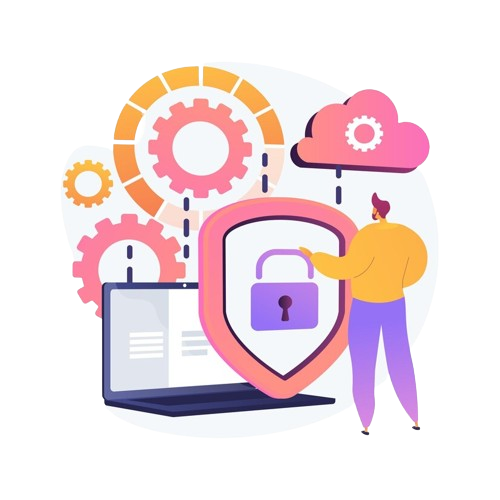Your Fortress in the Digital Age: A Guide to Security Operations Center (SOC)
Deyan June 25,
2024
In today's ever-evolving cyber threat landscape, businesses of all sizes face a constant barrage of
attacks. From phishing scams and malware to ransomware and data breaches, the potential consequences of a
security lapse can be devastating. This is where Security Operations Centers (SOCs) come in – your digital
defense headquarters.
What is a SOC?
A SOC is a dedicated team of security professionals and technology working together to proactively monitor,
analyze, detect, and respond to cyber threats. Think of it as a central nervous system for your
organization's security posture.
Why Does Your Business Need a SOC?
Here's why having a robust SOC is crucial for businesses in the digital age:
- Constant Vigilance: Cyberattacks don't take breaks. Hackers operate 24/7, exploiting
vulnerabilities around the clock. A SOC provides continuous monitoring, ensuring your defenses are always
on high alert.
- Enhanced Threat Detection: Skilled SOC analysts leverage advanced security tools and techniques
to identify even the most sophisticated threats that traditional security measures might miss.
- Faster Incident Response: Time is of the essence when dealing with a security incident. A
well-equipped SOC can rapidly pinpoint the source of the attack, minimize damage, and initiate swift
remediation efforts.
- Improved Security Posture: By analyzing threat data and identifying security gaps, SOCs help
organizations prioritize vulnerabilities and implement preventative measures to strengthen their overall
security posture.
- Compliance Adherence: Many industries have strict data security regulations. A SOC can help
businesses meet compliance requirements by ensuring proper monitoring, logging, and incident response
procedures are in place.
The Evolving SOC Landscape:
Traditionally, SOCs were often expensive to maintain, requiring dedicated staff and advanced security
infrastructure. However, the landscape is changing:
- SOC as a Service (SOCaaS): This cloud-based model allows businesses to leverage the expertise and
resources of a dedicated SOC provider without the hefty upfront investment.
- Managed SOC: This is a hybrid approach where businesses outsource some or all of their SOC functions
while still maintaining control over certain aspects of their security operations.
- In-House SOC: For large enterprises with extensive security needs, building a dedicated in-house SOC
might be the most suitable option. This requires significant investment in personnel, technology, and
continuous training.
What to Look for in a SOC:
When evaluating a SOC or SOCaaS provider, consider these key factors:
- Expertise: Does the SOC have experienced personnel with diverse skillsets in threat detection,
incident response, and security analysis?
- Technology: Does the SOC utilize the latest cybersecurity tools and technologies for threat
detection, threat intelligence, and security information and event management (SIEM)?
- Incident Response Plan: Does the SOC have a well-defined incident response plan that outlines
the steps to be taken in case of a cyberattack?
- Compliance & Regulations: Does the SOC understand industry-specific regulations and can they
help you achieve compliance?
- Scalability: Can the SOC adapt and scale its services to meet your growing security needs?
Building a Strong Security Culture:
A SOC is an essential tool, but it's just one piece of the cybersecurity puzzle. A strong security culture is
equally important. This involves empowering employees with security awareness training, promoting best
practices, and fostering a culture of reporting suspicious activity.
Conclusion:
Cybersecurity threats are a constant reality. By implementing a robust SOC and fostering a strong security
culture, your business can build a formidable defense against cyberattacks. Whether you opt for an in-house
SOC, a managed SOC, or a SOCaaS solution, having a dedicated team of security professionals in your corner can
be the difference between surviving a cyberattack and becoming another statistic.
Next Steps:
- Consider conducting a security assessment to identify your vulnerabilities and determine the best SOC
solution for your needs.
- Research SOCaaS providers and their service offerings.
- Invest in security awareness training for your employees.
- Develop a comprehensive incident response plan.
By taking these proactive steps, you can create a more secure environment for your business and your
valuable data.
